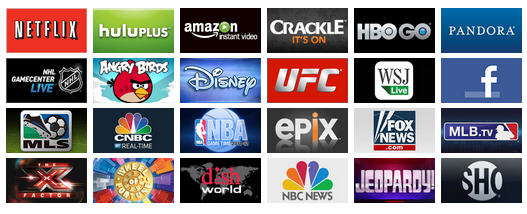by Larry Magid
Netflix shares stumbled in after-hours trading Tuesday after the Los Gatos-based company reported that it added only 530,000 new streaming customers while losing 850,000 customers who had been renting DVDs.
I don’t give investment advice and have no idea what the company’s bottom line will look like going forward, but that doesn’t stop me from being optimistic about Netflix’s ultimate goal of replacing those shiny plastic discs with movies and TV shows that users stream online.

I’m one of the many people who once got DVDs from Netflix then switched to streaming content. Frankly, I’m quite happy with the service. Sure, you don’t get very many blockbuster movies but you do get to select from a pretty big library of older flicks, documentaries and independent films as well as old TV shows.
In fact, Netflix and its competitors have changed the way my wife and I watch TV. We still use our satellite dish to watch live news and occasional episodes of John Stewart and Steven Colbert, but most of our viewing these days is either through the Roku internet devices connected to two of our home TVs or on a laptop, tablet or even smartphone. We’ve watched quite a few movies but we’re mainly excited about TV shows that we either missed when they were on the air or enjoyed and want to view again. We sat through all 100 episodes of Monk and 75 segments of “Friday Night Lights” along with a free season of “Downton Abbey.”
Your tastes may differ but you’ll find a pretty wide variety of shows, from “Leave It to Beaver” to the first four seasons of “Mad Men.”
At $8 a month ($96 a year) Netflix is a bargain compared to the various options available from cable and satellite companies. However, Amazon Prime, at $79 a year, is also a good deal especially if you shop atAmazon.com and take advantage of free two-day shipping on items fulfilled directly by Amazon (items shipped by Amazon partner stores don’t always qualify for free shipping). The Prime library isn’t nearly as vast as Netflix’s but there are some quality shows including “The West Wing” and “Fringe” which came to the service through an exclusive deal with Warner Bros.
I was a big fan of “The West Wing” when it first aired on NBC and have been re-loving it over the past several days since the free streaming offer was introduced. People who don’t subscribe to Prime pay $34 a season so we’re getting our money’s worth on this one.
HBO, which is joined at the hip to the cable and satellite companies, also streams its content but to get access to HBO Go you have to sign in through your cable or satellite account and be an HBO subscriber. We get HBO through Dish Network, but I was out of town when “Newsroom” started airing, so I just got in the habit of watching it on my laptop, tablet or Roku.
The main downside to streaming is that you need a pretty fast Internet connection. Even the Wi-Fi available on some domestic flights generally is not fast enough to stream video. The other problem is wireless data caps. Exception for Sprint, all the major wireless providers limit the number of gigabytes you can download or stream per month, which can have a bit chilling effect on how much video you watch.
I sympathize with the wireless companies who have to divvy up their limited spectrum among their millions of customers. However, they — and the Federal Communications Commission — must find a way to ease these restrictions if we’re going to fulfill the promise of unlimited Internet access from wherever we happen to be.
Be the first to comment